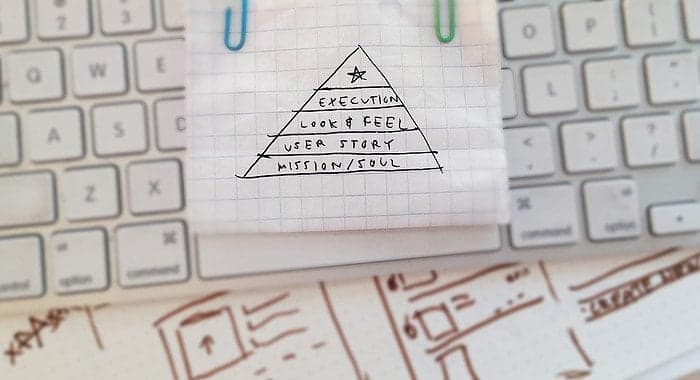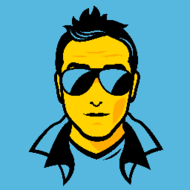
Almost two years ago, I got to sit down with Ryan Germick, the lead of the Google Doodle team.
When I asked how his team kept shipping such great designs consistently, Ryan asked for my notebook, and drew a pyramid. He divided it into five layers, and he told me:
First, start with the Mission, the Soul, the ‘Why?’
Understanding the soul of a project is the foundation upon which a complete design solution is built. It’s quite abstract, and can take some thought, but within the soul are the answers to your design problem.

Simon Sinek in his popular TED Talk, explains that you should “Start with ‘Why’”
Everything you design ties back to this idea, so identifying it is the first and most important part of the design process.
If your mission statement is too long, ask dumb questions and challenge your assumptions to widdle it down to its essence. The soulshould elegantly answer the question “what is this for?”
Phase Two: Understand the User Story
A person’s life will never begin and end with your product/website/poster/hardware. There is context before, during, and after.

Consider how a person feels, what they are primed for, and what they want before they interact with your design. Be as human-centric as possible. There are lots of ways to do this.
When a person interacts with your *thing*, what do they experience, and how does it relate to the mission and soul of the project?
The experience a person has using, listening to, seeing, and touching your *thing* should reinforce the soul of the design. In other words: how integrate ‘what the user does’ and ‘what the project does.’
Furthermore, when the user’s experience is ‘over’, what happens next?
Phase Three: Develop the Look & Feel
Now that you know why you’re making this thing and how people will interact with it, it’s time to answer the question: What does it look like?

The look & feel for Crossfader, an app that lets anybody DJ like a pro by tilting their phone.
This layer is tertiary to the user story and the soul of the design, but it is commonly misunderstood as the ‘biggest’ or ‘most important’ part of a designer’s job.
Answering the first two questions makes it easy to design something that is fulfilling and resonates with people on a subconscious level.
Using the soul and the story as a guide simplifies building visual design that is integrated in a profound way.
Phase Four: How do we execute?
The final component of a design is the implementation. If you’re a design-only type, it’s tempting to take a ‘hands off’ approach during this phase and let developers do their thing—but stay vigilant!
This phase is flexible because there are many different ways to implement a design. Find the way that integrates with the soul, the user story, and the look & feel to create a cohesive whole.
Take an active part is ensuring no detail is spared. Dot your i’s and cross your t’s, measure twice, cut once, etc…
Regardless if you’re doing the making yourself, make sure it’s made, and made right.
Phase Five: Go Over the Top
So you’ve materialized an idea that solves the problem and works well. At this point, you’ve got a completed design.
Most designers stop here. Don’t.
This is the part where you take it up a notch.
This is the difference between ‘good’ design and ‘great’ design.
This step is where you can really unleash your creativity to take what you already have (which is solid) and make it shine with something unexpected and awesome.

Tumblr has a fun and playful ‘like’ and ‘unlike’ animation that surprised and delighted me the first time I saw it. Source
Since you’ve designed your way from the soul, the user experience, the visual design, and through the execution, you are given a powerful opportunity to tie your project together with a magnificent star on top.
Let’s Recap:
[arrow_list]
- When building a pyramid, you’ve got to start at the bottom.
- Your foundation is defining the mission and soul of the project.
- From there, consider the user story and context.
- This leads you to a solid vantage point from which to create a visual design that looks and feels just right.
- Execute the design and build something you’re proud of.
- Finally, put a cherry on top with surprising and delightful details that let the soul really shine all the way through.
While my examples are software-related, these principles apply globally to all design-related arenas by replacing ‘user’ with ‘listener’, ‘viewer’, etc.
About the Author – William Newton
William Newton is a UI & UX Designer, Skateboarder,  DJ & Internet Enthusiast based out of San Francisco.
DJ & Internet Enthusiast based out of San Francisco.































 Ad-lite browsing experience
Ad-lite browsing experience